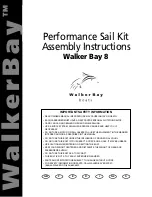
12
Applications
262 to Hard Knee mode, with a fairly low THRESHOLD and a moderate COM-
PRESSION RATIO.
Stereo Couple
The ability to choose between dual mono or stereo coupled operation allows
flexibility in a variety of situations. Use dual mono (uncoupled) operation when
processing independent signals such as individual instruments or on channel
inserts of a mixer. Use stereo coupled operation when simultaneously process-
ing stereo L/R signals such as mastering to tape or compressing the stereo L/R
outputs of a live mixing console. Stereo coupling not only allows identical con-
trol of both channels from one set of master controls, but it causes identical
gain reduction in both channels. This is not only desirable, but necessary to
maintain the stereo image. If the left and right channels’ gains were allowed to
change independently, the stereo image would audibly shift away from the
channel in which gain reduction is occurring, toward the channel in which less
(or no) gain reduction is occurring.
To provide the most pleasing and accurate signal dynamics, dbx processors use
True RMS Power Summing™. This means that, in stereo couple mode, signals
above the compressor threshold in either channel cause gain reduction in both
channels. This ensures that the protective or creative action of the compressor is
maintained for both channels, while preserving the integrity of the stereo image.
Additionally, True RMS Power Summing™ allows stereo signals to be combined
without phase cancellation in an intelligent way, interpreting the combined sig-
nals the same way the human ear and brain combine and interpret them. The
natural result is the pleasing sound of dbx compression that has become a
world-wide standard.


































